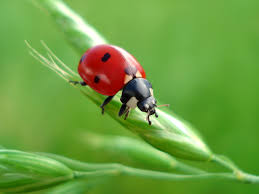The Fascinating World of Ladybugs: Unraveling Their Meaning and Significance

Ladybugs, those tiny, spotted beetles that grace gardens and fields around the world, have captivated human imagination for centuries. Beyond their charming appearance, these insects hold deep cultural, ecological, and symbolic significance in various societies. From folklore to scientific study, the meaning of ladybugs transcends mere biology, reflecting humanity’s relationship with nature and the mysteries of life itself.
Introduction: Ladybugs in Nature and Culture
Ladybugs, scientifically known as Coccinellidae, belong to a diverse family of beetles characterized by their distinctive dome-shaped bodies and vibrant coloration. Found on every continent except Antarctica, these beetles inhabit a wide range of ecosystems, from temperate forests to tropical jungles and urban gardens. Their small size belies their ecological importance as voracious predators of aphids and other garden pests, making them beneficial insects in agriculture and horticulture.
Historical and Cultural Significance
Ancient Symbolism and Folklore
Ladybugs have been revered in many ancient cultures for their symbolism and perceived qualities. In European folklore, they were associated with protection, often believed to bring good luck and ward off pests from crops. Farmers would celebrate their appearance as a sign of a bountiful harvest to come. In Norse mythology, ladybugs were linked to the goddess Freyja, symbolizing love and fertility.
Religious and Spiritual Beliefs
Across different religious traditions, ladybugs hold special significance. In Christianity, they were seen as symbols of the Virgin Mary, often referred to as “Our Lady’s bird” or “Beetle of Our Lady.” This association stems from the bright red wings of some species, which resemble the Virgin Mary’s cloak in medieval art. Ladybugs also appear in Native American folklore, where they symbolize protection and good fortune.
Scientific Insights into Ladybug Ecology
Adaptations and Behavior
Ladybugs exhibit fascinating adaptations that contribute to their ecological success. Their bright coloration, typically red or orange with black spots, serves as a warning to predators of their toxicity, a defense mechanism derived from the chemicals in their bodies. Ladybugs are agile flyers and can cover significant distances in search of prey or suitable habitats, contributing to their widespread distribution.
Lifecycle and Reproduction
Understanding the lifecycle of ladybugs provides insights into their ecological roles. These beetles undergo complete metamorphosis, starting as eggs laid near colonies of aphids or other prey. The larvae, often resembling tiny alligators, are voracious predators, consuming hundreds of aphids before pupating. Adult ladybugs continue this predatory behavior, consuming aphids, mites, and other small insects, thus benefiting agriculture by controlling pest populations.
Symbolism and Cultural Interpretations
Luck and Prosperity
Ladybugs are universally recognized as symbols of luck and prosperity in many cultures. The belief in their auspicious nature spans continents and generations, with tales of farmers rejoicing at their arrival and children marveling at their gentle demeanor. This symbolism persists in modern culture, where ladybug motifs adorn everything from jewelry to clothing, embodying positivity and good fortune.
Love and Relationships
In addition to luck, ladybugs symbolize love and relationships in various traditions. Their appearance is often interpreted as a sign of romantic encounters or a reminder of enduring affection. This symbolism is deeply rooted in the insect’s graceful movements and harmonious coloration, evoking themes of companionship and devotion across different cultures.
Contemporary Perspectives and Conservation
Conservation Challenges
Despite their cultural and ecological significance, ladybugs face challenges in the modern world. Habitat loss, pesticide use, and climate change threaten their populations, leading to declines in some species. Conservation efforts focus on preserving natural habitats, reducing pesticide applications, and promoting awareness about the importance of biodiversity in agricultural landscapes.
Educational Outreach
Educational programs and citizen science initiatives play a crucial role in raising awareness about ladybugs and their role in ecosystems. By engaging the public in monitoring and conservation efforts, scientists can gather valuable data on population trends and distribution, contributing to broader conservation strategies aimed at protecting these beneficial insects.
Conclusion: The Enduring Legacy of Ladybugs
Ladybugs, with their striking appearance and multifaceted symbolism, continue to inspire awe and admiration across cultures. From ancient beliefs in their protective powers to modern scientific insights into their ecological roles, these beetles embody the intricate relationship between humans and the natural world. As we navigate environmental challenges and seek to preserve biodiversity, understanding the meaning of ladybugs reminds us of our interconnectedness with all living beings and the importance of safeguarding our planet for future generations.
In conclusion, the meaning of ladybugs transcends mere biology; it encompasses a rich tapestry of cultural symbolism, ecological significance, and human fascination. By exploring their diverse roles in nature and culture, we gain a deeper appreciation for these enchanting insects and the lessons they impart about resilience, adaptation, and the delicate balance of life on Earth.
3.5





